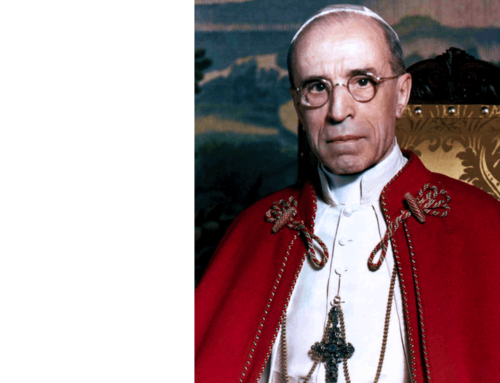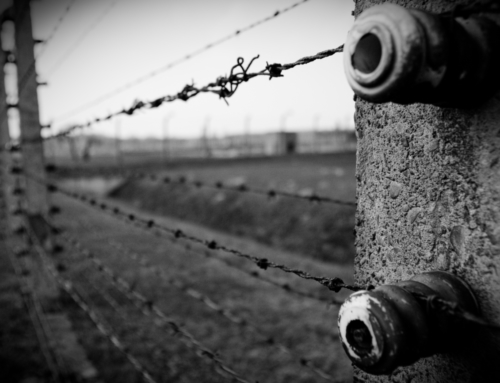|
By Sr. Margherita Marchione, Ph.D. (Paulist Press, 2000) In the last 30 years, above all with the pontificate of John Paul II, giant steps have been made toward progress in dialogue between Jews and Catholics. To prepare a serious scholarly analysis on Pius XII, several scholars were called to participate in a Commission in order to examine the Vatican documents of the Holy See during the Second World War. This group’s assignment as scholars was to analyze documents already published. The group consisted of three Catholics: Eva Fleischner, Gerald Fogarty, and John Morley; and three Jews: Michael Marrus, Bernard Suchecky, and Robert Wistrich. Marrus was interviewed by Paolo Mastrolilli, an Italian journalist. “We must not fall into the error of evaluating facts that occurred more than 50 years ago with today’s sensitivity,” Marrus stated. …”Vatican Council II has enormously changed relations between Jews and Catholics, and therefore now certain attitudes may seem strange. During the period of Pius XII, the reality of the times was different.” According to Fogarty, “Pius XII believed more in diplomacy than in public declarations and he behaved himself accordingly. His priority was to stop Nazism and for this reason he also accepted in silence the alliance with Russia, reserving for himself the fight against Communism at a latter date. The American Secret Services have documents that judge in a very positive way the actions of the Vatican during the war, but until now they have remained secret. The Holy See was careful to preserve its neutrality, but there exists proofs of the help offered to several German generals, who in the Spring of 1940 had planned a plot to free themselves of Hitler: therefore, what counts more, the public words of the Pope, or the acts accomplished to stop Nazism?” Fogarty also said that “the panel has still not succeeded in overcoming the widespread myth in Anglo-Saxon culture which believes that there are important unpublished documents in the Vatican Archives. If such files existed, other proofs of those documents would have been found in the studies I have carried out in archives all over Europe.” In order to help his colleagues understand that the opening of the Vatican Archives does not answer these questions definitively, he gave this example: “In the spring of 1940 there was an attempt to oust Hitler by a group of generals who later tried to surrender to the English. The negotiations took place with the Vatican’s mediation and the knowledge of Pius XII. However, there are no documents on this case in the Vatican.” There was no guarantee that the Nazis would have respected the Vatican. One can readily understand that, when the Nazis occupied Rome and the SS and the Gestapo were searching for Jews throughout the Rome area, it was necessary to destroy whatever documentation might have affected Vatican neutrality. Apparently, the Commission members did not research the existing material that would have answered, at least in part, some of the 47 questions. Some of this information may be found in other archives. A typical example is Number 44. It reads: “The Poles were major victims of the Nazis. Members of the Polish Government in Exile in London and some Polish bishops were often very vocal in their criticism of Pius XII’s role. It has been reported that the Vatican commissioned the Jesuits to prepare a defense of its Polish policy. Is this correct and, if so, may we see the report? More generally, the subject of Vatican-Polish relations is an essential element for understanding the role of the Holy See during the Holocaust period and deserves further investigation in the Vatican archives. Is there other pertinent information on this subject in the archives that is not in the volumes, and may we see it?” Obviously the members of the Commission did not complete their homework. The documentation they requested may be found in the New York Public Library. Indeed, millions of Jews and non-Jews were brutally victimized and exterminated by the Nazis. The document, “Pope Pius and Poland,” published by The American Press should have enlightened the Commission members. Copies have been available. With the imprimatur of Cardinal Francis J. Spellman, Archbishop of New York, this documentary outline of papal pronouncements and relief efforts in behalf of Poland since 1939, was published in 1942, and made available at 10 cents per copy. In the Foreword, Francis X. Talbot, S.J., editor-in-chief, states: “To those who love and seek the truth, here is the truth. History will record the truth that Pope Pius XII stands united with Poland, as Poland and the Polish people everywhere are united with the Pope.” This pamphlet is a schematic outline of the evidence available that shows the fatherly affection and deep understanding which His Holiness revealed toward the Polish people. It is based on what has been published in newspapers and other periodicals or announced on the radio. (See The New York Times, Vatican Radio and L’Osservatore Romano.) The day after his election, March 3, 1939, Pius XII pleaded for peace and diplomatic efforts to prevent the outbreak of hostilities. (See Acta Apostolicae Sedis, XXXI (1939), pp. 86, 87.) Other statements followed on Easter Sunday (Ibid., p. 145ff.) and June 2, 1939, to the Sacred College of Cardinals [See L’Osservatore Romano, June 3, 1939.] On August 29, 1939, in his radio appeal Pius XII pleaded: “…Humanity craves justice, bread and liberty, not the sword that kills and destroys. Christ is with us; for brotherly love was made by Him a solemn and fundamental commandment…” (Acta Apostolicae Sedis, XXXI, 1939, pp. 333, 335) On August 31, 1939, the Pope called the ambassadors of Germany, France, Italy and Poland to his study and the Cardinal Secretary of State distributed to each a copy of his pontifical message: “The Holy Father is unwilling to abandon the hope that the present negotiations may issue in a just and peaceful solution such as the whole world continues to implore. In the name of God, therefore, His Holiness exhorts the Governments of Germany and Poland to do everything possible to avoid incidents of every kind and to forego every measure that might aggravate the present tension. He begs the Governments of England, France and Italy to second this request. (Ibid., pp. 335-336) Already on September 3, 1939, many Polish cities were burning and the country was bathed in blood and tears. The Pope received a group of Polish refugees at Castelgandolfo and tried to comfort them, pointing out that the Fatherly Providence of God was the fundamental guarantee of the indestructibility of the nation and of its rebirth after the passing calamities of the moment. Christ… “one day will reward the tears you shed over your beloved dead, and over a Poland that shall never perish.” (Ibid., pp. 393-396) The Commission questions Pius XII’s reaction to Kristallnacht (“The Night of the Broken Glass”). Did the members read the articles in the Vatican newspapers, L’Osservatore Romano, reporting on the anti-Jewish atrocities committed on Kristallnacht? This newspaper, describing the crimes of November, 1938, with headlines such as, “Dopo le manifestazion antisemite in Germania,” and “La ripercussione delle manifestazion antisemite in Germania,” was the voice of Pope Pius XII. As Andrea Tornielli, in Il Giornale, November 13, 1998, points out: “It is ironic that Meir Lau, Israel’s Chief Rabbi, denounced the silence of Pope Pius XII after Kristallnacht on November 9, 1938.” The Rabbi questioned: “Where was Pius XII in November of 1938.” “Why didn’t he denounce the violence of that night?” Torniello writes: “Eugenio Pacelli was not yet Pope. He was in Rome, Secretary of State to Pius XI who did not hesitate to condemn racial hatred during an audience, stating: Spiritually we are all Semites.” [The Rabbi seems to have forgotten that Eugenio Pacelli had not yet been elected to the Chair of Peter which took place on March 2, 1939.] What was Pacelli doing in the Vatican? Even before Kristallnacht he was assisting the Pontiff in writing the encyclical Mit brenneder Sorge (March 14, 1937), with which the Catholic Church condemned Nazism. This was a denunciation that provoked Hitler’s anger. It was written in German because the Vatican wanted it read in all the churches in Germany on Palm Sunday, March 21, 1937. In fact, the following day, the National Socialist Party newspaper Volkischer Beobachter published a poisonous counterattack to the “Jewish God and his vicar in Rome.” Tornielli belongs to a group of Jewish and Christian writers who want to spread the truth. However, the difficulty lies with the fact that prejudice regarding the “silence” of the Pontiff is a very popular theme. Apparently, the media refuses to acknowledge the truth. The facts cannot be denied. Sixty years ago on Kristallnacht, the Nazis destroyed 1,400 synagogues and stores belonging to Jewish citizens in Germany and Austria. The following days German newspapers published statements by Lutheran theologians who, far from condemning the violence, were pleased that the persecution began on Martin Luther’s birthday. According to Andrea Tornielli’s article, Hitler’s followers executed the program found in Luther’s book Von den Juden und ihren Lugen (1543), translated from German into Latin by Justus Jonas. In 1936 it was circulated in a version edited by the evangelical theologian Dr. Linden. An Italian edition with commentary by Attilio Agnoletto, was published in 1997. In this book, Luther advises that “under pain of death the Rabbis should not be allowed to teach and Jews should be denied the public trust and safe-conduct.” He also states that “work should be imposed on all young and robust Jews, men and women, so that they will earn their bread with the sweat of their brow.” It is not difficult to imagine that the Nazis would find these words the legitimization of the concentration camps. But it is strange that during the commemoration of Kristallnacht, the one to be accused has been Pope Pius XII. Instead, not a word about the theologians who applauded and reprinted the ferocious anti-Jewish libel. |
| Copyright © 1997-2011 by Catholic League for Religious and Civil Rights. *Material from this website may be reprinted and disseminated with accompanying attribution. |





